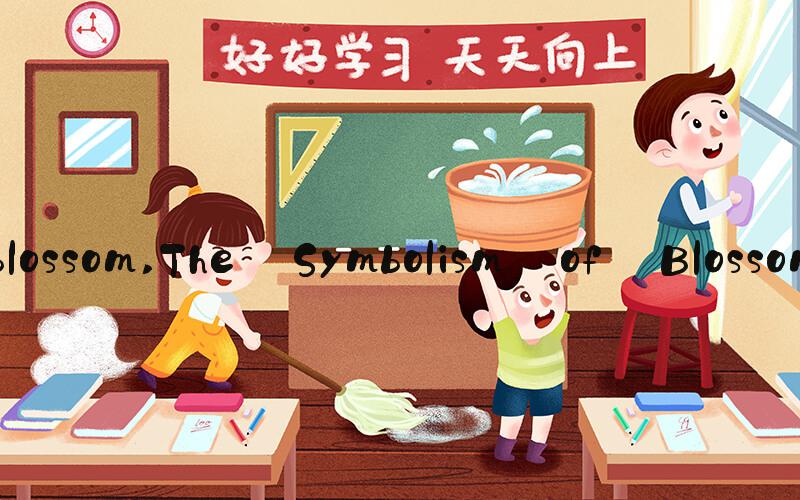
 Blossom: The Beautiful and Symbolic Flower
Blossom: The Beautiful and Symbolic FlowerBlossom, also known as the flower of a plant, is one of the most beautiful and symbolic elements in nature. Few things are more uplifting or energizing than seeing a tree bursting with blossom. This article will explore the symbolism and beauty of blossom and its vast cultural and historic importance.
The Symbolism of BlossomBlossom has deep symbolic meanings that go back centuries. The cherry blossom, for example, is the national flower of Japan and symbolizes renewal and the ephemeral nature of life. In ancient China, plum blossoms symbolized hope and perseverance. Across cultures and time, blossom tends to be associated with the changing of the seasons, the impermanence of life, and the beauty that can be found in fleeting moments.
Beauty in Cultural and Historical ContextBlossom has played an essential role in many cultures and historical events. In Japan, cherry blossom viewing or hanami, is a centuries-old tradition where people gather to appreciate the beauty of the cherry blossom trees in the springtime. In Europe, the tulip was once so highly valued that it created a nationwide financial bubble, known as Tulip Mania in the 17th Century. In the 1960s, the anti-Vietnam War movement used flowers, particularly daisies and carnations, as a symbol of peace and love.
The Science of BlossomBlossom's beauty and symbolism are not just limited to humans' cultural interpretation; there is also a complex biological process behind it. Blossom is the reproductive part of a plant that produces seeds for the next generation. The flower's color, shape, and scent play a vital role in attracting pollinators, such as bees and butterflies. In turn, these pollinators help spread the plant's pollen, allowing it to reproduce and thrive. Without blossom, our world would not have the vast array of flora we see today.
Blossom in Art and LiteratureBlossom's beauty has captured the imagination of writers and artists across time and culture. It's appeared in works ranging from ancient Chinese poetry to Monet's Impressionist paintings of water lilies. William Shakespeare, in his play "Romeo and Juliet," wrote about the beauty of the rose, saying that "a rose by any other name would smell as sweet". Artists and writers continue to use blossom in their work today as it represents beauty, life, and hope.
Blossom and Our Well-BeingFinally, blossom has a significant impact on our well-being. Studies have shown that exposure to nature, including blossoms, can reduce stress, improve mood, and boost cognitive function. Seeing and smelling blossoms can help us connect to nature, appreciate the present moment and find joy in the simple things in life. In many ways, blossom is a reminder of the beauty that surrounds us in everyday life.
ConclusionFrom cultural and historical significance to scientific beauty and artistic representation, blossom has played an important role in human life and society. As we follow the changing of the seasons and the emergence of flowers each year, we are reminded of the fleeting but immense beauty of blossom and its symbolic value in our lives.
